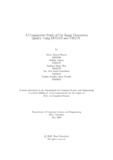| dc.contributor.advisor | Mostakim, Moin | |
| dc.contributor.author | Shayer, Mirza Ahmad | |
| dc.contributor.author | Anjum, Nafisha | |
| dc.contributor.author | Mim, Sushana Islam | |
| dc.contributor.author | Chowdhury, Md. Abu Sajid | |
| dc.contributor.author | Preoshi, Noshin Nanjiba Islam | |
| dc.date.accessioned | 2022-12-13T05:15:14Z | |
| dc.date.available | 2022-12-13T05:15:14Z | |
| dc.date.copyright | 2022 | |
| dc.date.issued | 2022-05 | |
| dc.identifier.other | ID: 18101496 | |
| dc.identifier.other | ID: 18301217 | |
| dc.identifier.other | ID: 18101579 | |
| dc.identifier.other | ID: 18101013 | |
| dc.identifier.other | ID: 18101002 | |
| dc.identifier.uri | http://hdl.handle.net/10361/17644 | |
| dc.description | This thesis is submitted in partial fulfillment of the requirements for the degree of Bachelor of Science in Computer Science, 2022. | en_US |
| dc.description | Cataloged from PDF version of thesis. | |
| dc.description | Includes bibliographical references (pages 47-50). | |
| dc.description.abstract | In today’s modern society, image generation (synthesis) has a great number of uses in
various tasks. Image generation is used in crime forensics, improving image quality
and generating better images. In 2014, a scientific breakthrough occurred in the
machine learning community when Ian Goodfellow and his colleagues introduced
the GAN (Generative Adversarial Network). Ever since then, GANs have become
a more popular concept in the scientific community. Even today, GANs are being
used, utilized and upgraded. This thesis is a comparative study of two GANs used
for generating images of cars- DC-GAN (Deep Convolution) and VS-GAN (Vehicle
Synthesis). The study will determine which of the two is better suited to generate
high quality images of cars. We will train both GANs using the same dataset. The
dataset consists of about 16185 Google images of random cars, 8144 for training
and another 8041 for testing. The dataset is already preprocessed and split. We
will compare the GANs training times, losses, accuracies and pictures generated,
showing how well they perform. We will run all the GANs for 40 epochs in both
training and testing. We will compare the CGAN, DCGAN, VSGAN, WGAN and
WGAN-GP, to see which performs the best. We have used K-Nearest Neighbors,
Regression and Random Forest Classifier to calculate the accuracies of all the GANs.
We have displayed the results in tabular and graphical formats. We believe this will
improve GAN research by providing an excellent comparison between the GANs and
determine which is better suited for the given task. We also hope to improve the
models further in the future and make an even more in depth comparison between
the GAN architectures. | en_US |
| dc.description.statementofresponsibility | Mirza Ahmad Shayer | |
| dc.description.statementofresponsibility | Nafisha Anjum | |
| dc.description.statementofresponsibility | Sushana Islam Mim | |
| dc.description.statementofresponsibility | Md. Abu Sajid Chowdhury | |
| dc.description.statementofresponsibility | Noshin Nanjiba Islam Preoshi | |
| dc.format.extent | 50 Pages | |
| dc.language.iso | en_US | en_US |
| dc.publisher | Brac University | en_US |
| dc.rights | Brac University theses are protected by copyright. They may be viewed from this source for any purpose, but reproduction or distribution in any format is prohibited without written permission. | |
| dc.subject | Image generation | en_US |
| dc.subject | GAN | en_US |
| dc.subject | CGAN | en_US |
| dc.subject | DCGAN | en_US |
| dc.subject | VSGAN | en_US |
| dc.subject | WGAN | en_US |
| dc.subject | WGANGP | en_US |
| dc.subject | Epochs | en_US |
| dc.subject | Training | en_US |
| dc.subject | Testing | en_US |
| dc.subject | K Nearest Neighbors | en_US |
| dc.subject | Regression | en_US |
| dc.subject | Random Forest Classifier | en_US |
| dc.subject.lcsh | Image processing--Digital techniques | |
| dc.title | A comparative study of car image generation quality using DCGAN and VSGAN | en_US |
| dc.type | Thesis | en_US |
| dc.contributor.department | Department of Computer Science and Engineering, Brac University | |
| dc.description.degree | B. Computer Science and Engineering | |

